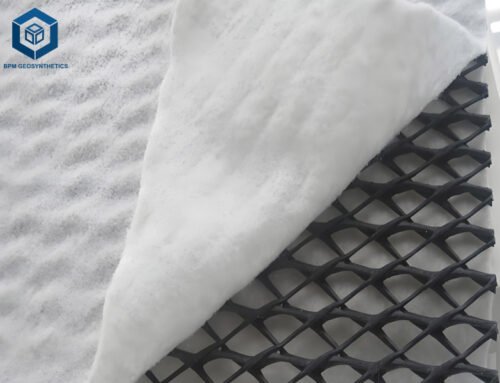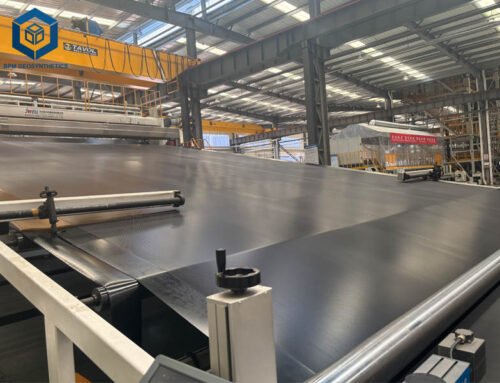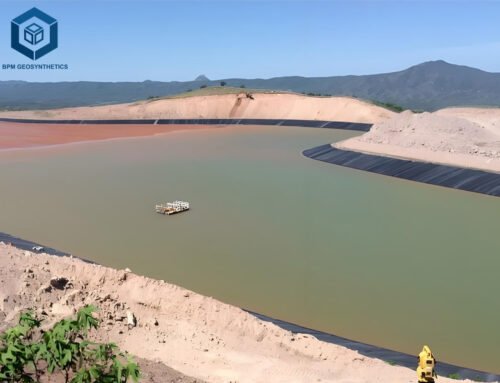Geomembrana is an anti-seepage material composed of a plastic film as the base material, compounded with non-woven fabrics to create a geotextile structure. The anti-seepage performance of Geomembrana primarily relies on the quality of the plastic film. Commonly used plastic films for anti-seepage purposes include polyvinyl chloride (PVC), polyethylene (PE), EVA (ethylene/vinyl acetate copolymer), and ECB (ethylene vinyl acetate modified asphalt copolymer), with some specifically designed for tunnel applications (Concrete Geomembrana). These polymer-based materials exhibit characteristics such as low specific gravity, high flexibility, strong extensibility, excellent deformation adaptability, corrosion resistance, low temperature resistance, and good frost resistance.
Geomembranas are known for their durability, flexibility, and resistance to chemicals and temperature changes, making them ideal for many environments. Geomembranas play an important role in protecting the environment and human health by preventing soil and groundwater contamination and providing a barrier against harmful vapors.
BPM Geosynthetics specializes in providing high-quality HDPE geomembrane liner with custom size and thickness in bulk order at competitive factory prices. We’ll explore geomembrana types, HDPE properties, applications, and their future.
1. What Are Types of Geomembrana?
Several types of Geomembranas can be used depending on the matrix resin used. The most commonly used Geomembranas are listed below.
1.1 PVC Geomembrana
PVC (polyvinyl chloride) Geomembrana is a thermoplastic waterproofing material made of vinyl, plasticizers and stabilizers. When dichloroethane cracks into dichlorides, the products polymerize to create the polyvinyl chloride resin used in PVC Geomembranas. PVC Geomembranas are tear, abrasion and puncture resistant and are suitable for use in the construction of canals, landfills, soil remediation, wastewater lagoon liners and storage tank liners. The material is also ideal for maintaining drinking water and preventing contaminants from entering water sources.
1.2 TRP Geomembrana
TRP (reinforced polyethylene) Geomembranas use polyethylene fabrics for long-term waterproofing and industrial waste applications. TRP Geomembranas are ideal for soil remediation, landfills, canals, temporary reservoir linings, agricultural and municipal applications due to their low temperature range, chemical resistance and UV stability.
1.3 HDPE Geomembrana
High-density polyethylene (HDPE) offers strong UV/temperature resistance, low material cost, durability and high chemical resistance. It is the most commonly used Geomembrana because it has a higher thickness that other Geomembranas do not have. HDPE is the first choice for pond and canal lining projects, landfills and reservoir covers. HDPE can be used to store drinking water due to its chemical resistance.
1.4 LLDPE Geomembrana
LLDPE (Linear Low Density Polyethylene) Geomembrana is made of pure polyethylene resin, which is strong, durable, UV and low temperature resistant. Engineers and installers who need an impermeable Geomembrana often choose LLDPE because of its greater flexibility compared to HDPE. They are used in industrial applications such as animal and environmental waste containers and liquid storage tanks.
1.5 RPP Geomembrana
RPP (reinforced polypropylene) Geomembranas are polyester-reinforced liners made from UV-stabilized polypropylene copolymers that provide material stability, chemical resistance, and flexibility. Its strength and durability can be traced back to the nylon scrim support. RPP Geomembranas are ideal for long-term waterproofing and industrial waste applications. RPP is ideal for municipal applications, evaporation pond liners, aquaculture and horticulture, and tailings.
1.6 EPDM Geomembrana
EPDM (ethylene propylene diene monomer) Geomembrana has a rubber-like texture that gives it durability, UV stability, strength, and flexibility. They are ideal for extreme weather conditions and puncture resistant. EPDM Geomembranas are easy to install and are commonly used as surface barriers in dams, liners, mulches, backyard landscaping and other irrigation sites.
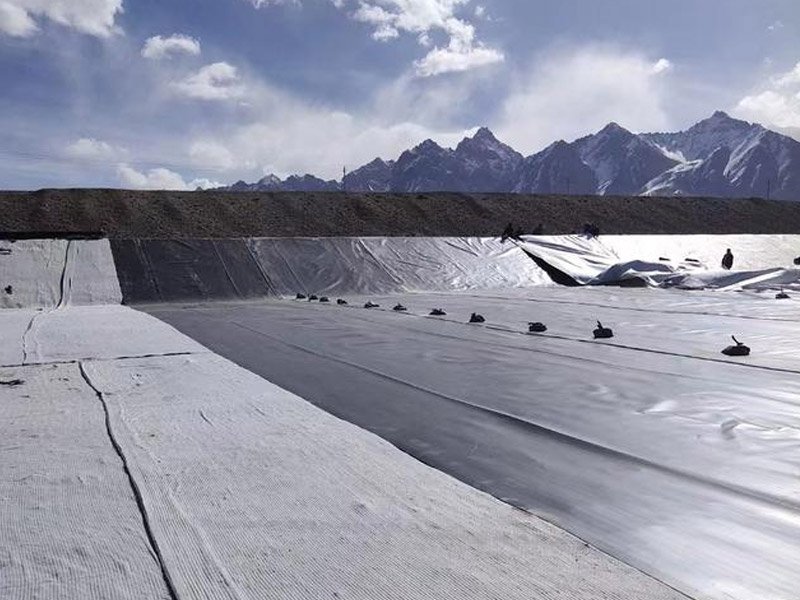
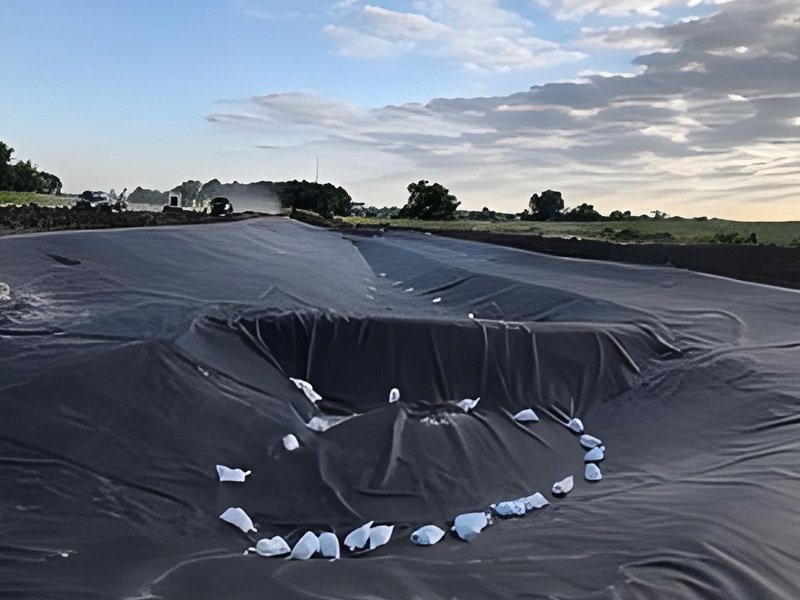
2. What Is HDPE Geomembrana?
HDPE (High Density Polyethylene) geomembrana is a durable and resilient material designed to withstand higher temperatures, ensuring an extended service life. It offers numerous advantages, including its affordability, excellent chemical resistance, and exceptional weathering properties, making it an ideal choice for containment applications. HDPE geomembrana is widely used in various industries such as water conservancy, petrochemical, agriculture, and aquaculture, thanks to its reliable anti-aging and waterproof properties.
Specifically formulated to resist UV radiation, chemicals, tearing, and punctures, HDPE geomembrana provides a cost-effective solution for lining projects that require low permeability and prolonged exposure to outdoor conditions. It is available in smooth or textured surfaces and thicknesses ranging from 20 mil to 120 mil, allowing for customization according to specific size and specification requirements. Whether it’s for water management, industrial applications, or environmental protection, HDPE geomembrana is a versatile and reliable choice that ensures efficient containment and long-lasting performance.
3. What Are Benefits of HDPE Geomembrana?
HDPE Geomembrana offers reliable anti-seepage properties, temperature resistance, chemical stability, tensile strength, weather resistance, adaptability, and safety, making it a preferred choice for a wide range of applications requiring effective containment and durability.
3.1 High Anti-Seepage Coefficient
HDPE Geomembrana is a flexible and waterproof material with a high anti-seepage coefficient, meaning it effectively prevents liquid seepage with a low permeability rate.
3.2 Wide Temperature Range
HDPE Geomembrana exhibits good heat resistance and cold resistance, allowing it to withstand high temperatures up to 110℃ and low temperatures down to -70℃. It maintains its performance in a wide range of operating environments.
3.3 Excellent Chemical Stability
HDPE Geomembrana has strong chemical stability, making it resistant to corrosion from strong acids, alkalis, and oils. It is an effective anti-corrosion material for applications where chemical resistance is crucial.
3.4 High Tensile Strength
HDPE Geomembrana possesses high tensile strength, enabling it to meet the requirements of high-standard engineering projects. It can withstand significant mechanical stress and maintain its integrity.
3.4 Weather Resistance and Anti-Aging Properties
HDPE Geomembrana exhibits strong weather resistance and anti-aging properties. It can be used in exposed conditions for extended periods while retaining its original performance and durability.
3.5 Overall Performance and Adaptability
HDPE Geomembrana demonstrates excellent tensile strength, elongation at break, and adaptability to uneven geological settlement. It can effectively cope with various harsh geological and climatic conditions.
3.6 Safe and Food-Grade Material
HDPE Geomembrana uses high-quality virgin plastic and carbon black particles without any preservatives. HDPE is widely used in food packaging bags and plastic wrap, replacing PVC as a safer and more suitable raw material.
4. What Is HDPE Geomembrana Used For?
HDPE Geomembrana finds application in various sectors:
4.1 Environmental Protection and Sanitation
It is used in landfills, sewage treatment plants, power plant regulating pools, and disposal of industrial and hospital solid waste.
4.2 Water Conservancy Projects
HDPE Geomembrana is employed for anti-seepage, plugging, and reinforcement in rivers, lakes, reservoirs, water channels, vertical core walls, and slope protection.
4.3 Municipal Projects
HDPE membrana is utilized in subways, building underground projects, planting roofs, roof gardens, and sewage pipe anti-seepage.
4.4 Gardens and Landscaping
HDPE Geomembrana is suitable for artificial lakes, rivers, reservoirs, golf course pond bottoms, slope protection, and green lawns.
4.5 Petrochemical Industry
High-density polyethylene geomembrana is used in chemical plants, refineries, oil storage tanks, chemical reaction tanks, sedimentation tank linings, and secondary linings.
4.6 Mining Application
HDPE Geomembrana is employed in washing tanks, heap leach tanks, ash dumps, dissolving tanks, sedimentation tanks, stockpiles, and tailings bottom lining for anti-seepage purposes.
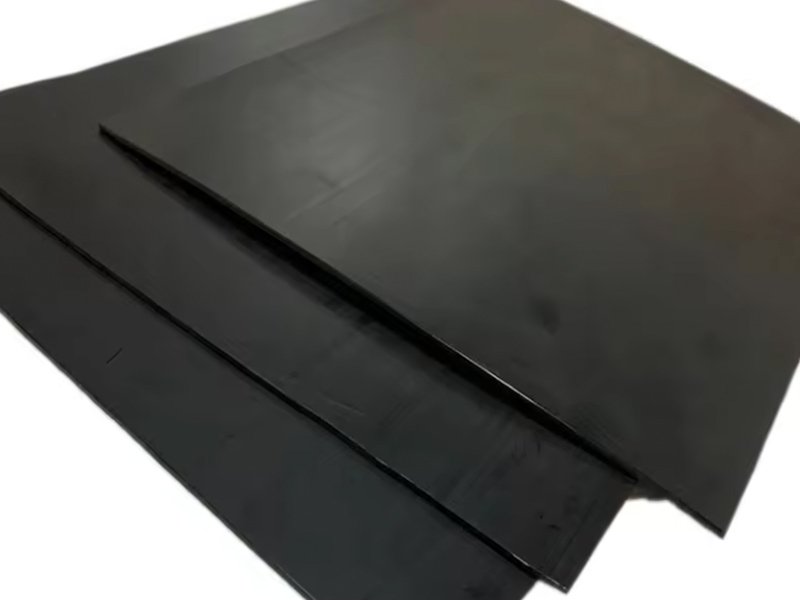
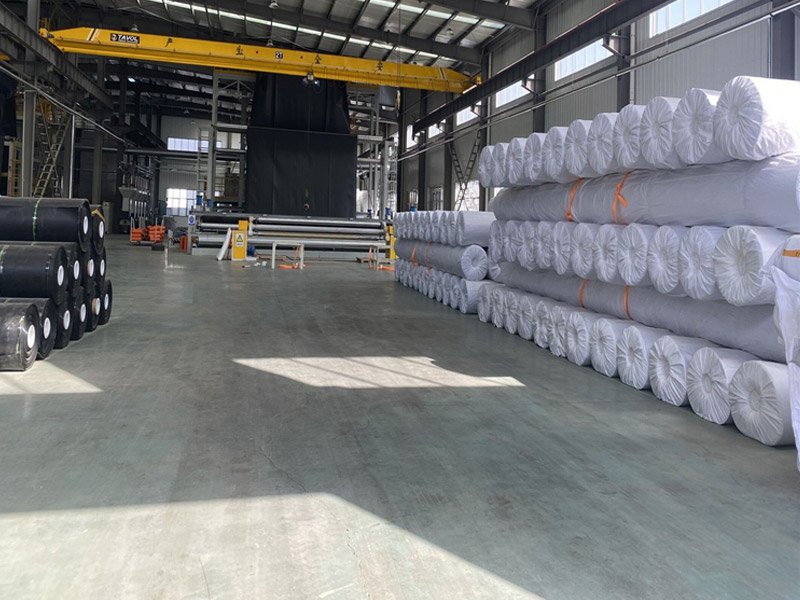
5. Relevant Regulations for HDPE Geomembrana
Quality standards are crucial when purchasing Geomembrana liner for your project. HDPE Geomembrana’s physical properties such as tensile strength and tear resistance are calculated based on test methods specified by ASTM and GSI.
5.1 ASTM International
Because of their extensive history in this field, the American Society of Testing and Materials (ASTM) is responsible for the bulk of generic Geomembrana test methods.
5.2 Geosynthetic Institute (GSI)
Geosynthetic Institute (GSI) is a group of organisations involved in geosynthetics. They provide comprehensive standards, specifications, guidelines and practices for all types of polymeric geosynthetic materials through Geosynthetic Research Institute (GRI). GSI includes test methods that are not addressed by ASTM.
5.3 Geomembrana Durability
Several factors affect the degradation of polymers within the Geomembranas. Factors like UV exposure, chemical impact, biological contaminants (animal, fungi) and thermal expansion impact the life span of the Geomembranas.
Technical expertise is necessary when selecting the right type and thickness for the project. This is generally based on the depth of the containment and the geo technical conditions of the site.
Please see the corresponding depth and thickness chart for a general overview. This is for guidance only, speak to one of our technical consultants for advice relevant to your requirements.
6. Summary
HDPE Geomembrana is synthetic waterproof barriers used to control fluid or gas migration in the environment, typically made from high-density polyethylene (HDPE) resins. They are commonly used in environmental applications such as containment of hazardous waste, separation of contaminated soil and groundwater, protection of water resources, and reinforcement of retaining walls, slopes and embankments.
HDOE Geomembrana offers high tensile strength, durability and chemical resistance, making them an ideal solution for many environmental and geotechnical applications. Additionally, they are lightweight, flexible and easy to install, helping to reduce construction time and costs. The durability of HDPE Geomembrana refers not only to the physical strength of the material, but also to the oxidation rate, which is affected by temperature, oxygen concentration, and the chemical composition of the surrounding medium.
Any questions, please contact us.

